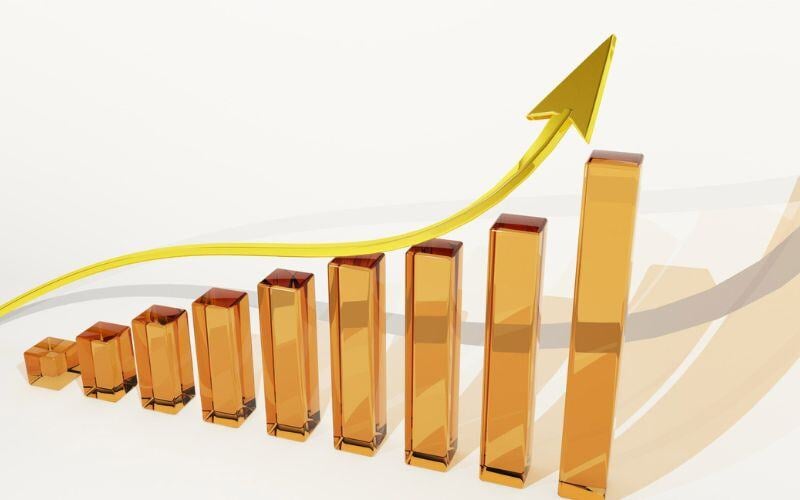Cash flow forecasting seems like a simple process, but it’s the most fundamental part of running a business. Forecasting helps you determine if you have enough money to keep the lights on, avoid overdrawing on your line of credit, send your employees home with paychecks, etc.
Cash flow itself is the flow of money in and out of your business. Cash flow forecasting is the act of determining your current cash position based on those cash inflows and cash outflows and determining what your future cash position will look like based on your current financial state. At least, that’s it on a basic level. What we consider cash flow forecasting is a bit more complicated.
To us, it’s the method of analyzing what cash flow will look like in the future identifying moments when cash may be low or high. Our clients can see what.jpg?width=544&height=340&name=Blog%20Post%20Template%20(27).jpg) their cash position will look like in both the short-term and long-term and make plans to adjust for cash fluctuations in the future. We want our clients to be able to see this information so they can make sound business decisions. That’s why cash flow forecasting is so important.
their cash position will look like in both the short-term and long-term and make plans to adjust for cash fluctuations in the future. We want our clients to be able to see this information so they can make sound business decisions. That’s why cash flow forecasting is so important.
Without concrete information, business owners make decisions based on their “gut”. But basing choices on gut feelings is no way to run a business. Actually, it’s a formula for disaster. That is why cash flow forecasting is so important.
Below we are going to dive a bit deeper into what cash flow forecasting is and how often it should be done.
What is Short-Term Forecasting?
Short-term forecasting is a 6 to 12 weeks rolling cash flow forecast based on current expenses and income. This forecast gives you a closer look at your current and near-future cash position and will help you determine your immediate cash needs like whether you will have enough money to pay your employees without having to tap into your line of credit. Another example would be whether you have enough cash to pay your vendors ahead of the set due dates. For this reason, we suggest looking at this forecast once a week to gain perspective into what can be adjusted if your near-future cash position is showing a cash shortage.
For example, you could hold off on making a few payments until next week after a client payment comes through. You could also follow up with a few clients that are late on their payments.
A related tactic to improve your cash flow is to decrease your accounts receivable (AR) days. For example, you may have a billing agreement that requests your clients pay their invoices within 60 days from the issue date. However, you could modify this payment terms agreement to require payment within 15 or 30 days instead. This means you will have more consistent cash flow coming in to pay your bills. It’s also important to note that if you don’t currently have any agreement in place addressing the timeframe in which a client should pay their invoice, having one is very beneficial. This provides your client with transparency on bill pay and makes enforcing this payment strategy much easier.
The graphic below illustrates the difference one company experienced by decreasing AR days. This is just an example of results you might see by using this strategy.

What is Long-term Forecasting?
A long-term cash flow forecast is a 1–5 year rolling cash flow projection looking at your future cash position. Essentially, this is your cash flow in the long term determined by the amount of risk your comfortable taking. This risk might involve purchasing equipment, hiring more employees, launching new product lines, etc. You should be reviewing this forecast monthly or each time you are considering a business-altering change.
Cash Flow Statement Versus Cash Flow Forecast
To create a cash flow forecast, you need to first start with a cash flow statement. A cash flow statement shows you what has happened to your cash over a specific period time in the past. The statement is prepared by taking a look at the balance sheet—which shows where you are at one point in time—and the income statement—which shows how you performed over that period of time. A cash flow statement takes the data from the balance sheet and income statement to determine what happened to your cash.
To sum it up, the purpose of a cash flow statement is to understand what has happened to your cash in the past. Financial statements utilize net income which won’t show where your cash is going on its own. So, that’s why we use insights gained from the cash flow statement to develop a cash flow forecast. The cash flow forecast will help you analyze what needs to be done in the future to generate more cash.
For example, you may determine that you need to stop pre-paying certain bills, collect invoices quicker, etc. You can determine specific steps you can take to increase cash flow in order to meet business goals.
This blog post just scratches the surface of what cash flow forecasting is. To find out more about the mistakes businesses make when forecasting, how you can use your forecast to scenario plan, and how to determine how much cash your business needs in reserve, download our booklet “The Role of Dynamic Forecasting in Ensuring Business Growth”.
.png?width=120&height=77&name=Summit-Virtual-CFO_color_rgb%20(1).png)













